The integration of advanced sensor technology into wearable devices has significantly enhanced the precision and reliability of human motion monitoring. Traditional sensors, such as accelerometers and gyroscopes, have been the backbone of motion tracking systems. However, recent innovations in flexible and textile-based sensors have opened new avenues for more comfortable and accurate monitoring solutions.
Accelerometers, which measure the acceleration forces acting on a device, have been widely used in various applications, including fall detection and gait analysis. Modern accelerometers are compact, with sizes ranging from 3 to 6 mm and thicknesses under 1.5 mm. They offer a wide measurement range and sampling rates between 50–100 Hz, making them suitable for real-time monitoring. For instance, studies have shown that accelerometers placed near the waist and thighs can effectively detect falls in elderly individuals, providing timely alerts for medical intervention.
Gyroscopes, on the other hand, measure angular velocity and are often paired with accelerometers to enhance the accuracy of motion tracking. Gyroscopes are used in various electronic products and are crucial for angular acceleration monitoring. Commercial gyroscopes are compact, with sizes ranging from 6.225 to 12,100 mm³ and thicknesses between 11 and 22 mm. This combination of sensors allows for more comprehensive motion analysis, which is essential in applications such as sports training and rehabilitation.
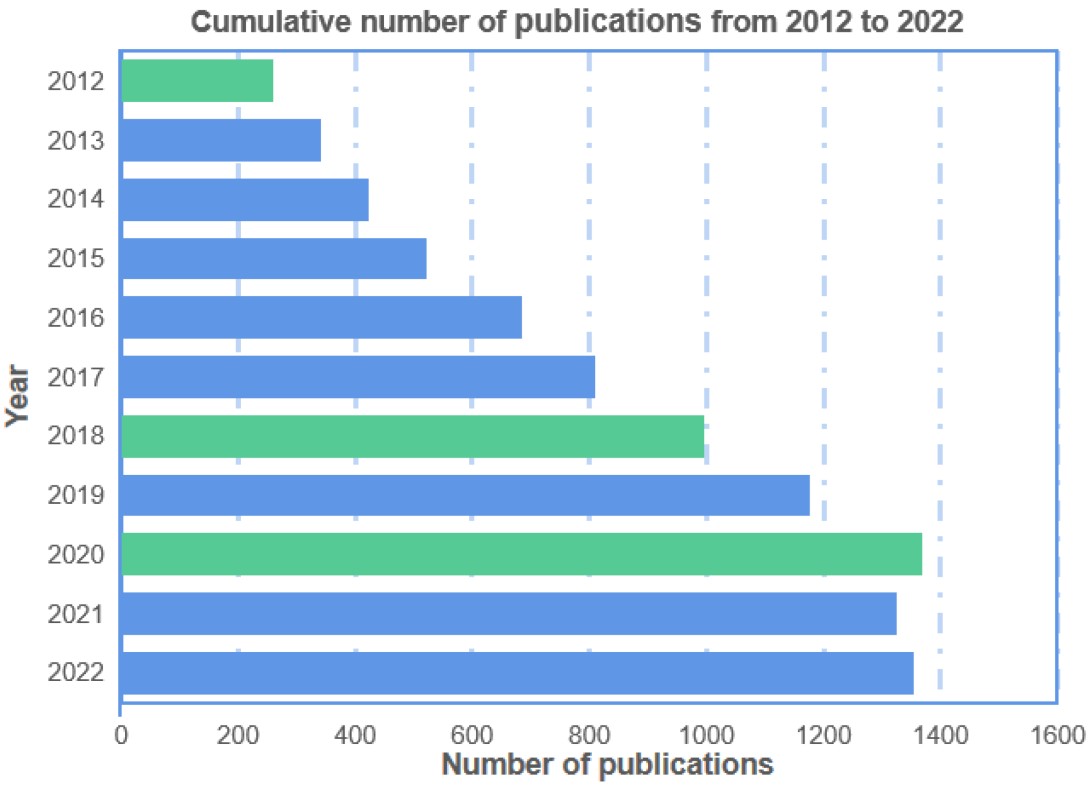 Fig.1 Number of papers related to human motion wearables published from 2012 to 2022. (Huang X., et al., 2023)
Fig.1 Number of papers related to human motion wearables published from 2012 to 2022. (Huang X., et al., 2023)
The Rise of Flexible Sensors
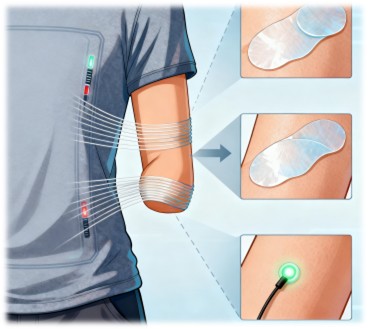
Flexible sensors represent a significant leap forward in wearable technology. These sensors, which include textile and thin-film sensors, offer high stretchability, biocompatibility, and sensitivity. They can be integrated into clothing and other wearable items, providing seamless and comfortable monitoring solutions.
Textile sensors use fibers, yarns, and fabrics as substrates to enable various sensing functionalities. These sensors have undergone several generations of development, with the latest generation focusing on fully electronic fabric devices. For example, Li et al. developed a microfiber membrane with omnidirectional super elasticity, which can identify materials and monitor hand posture. This advancement allows for the creation of wearable devices that are not only functional but also aesthetically pleasing and comfortable to wear.
Thin-film sensors, often referred to as e-skin, are designed to mimic the properties of human skin. These sensors can be worn directly on the skin and are capable of monitoring a wide range of movements and physiological signals. Recent developments in hydrogel sensors have expanded their application to larger deformations, such as joint movements. For instance, Chen et al. developed a hydrogel self-powered human motion sensor with an elongation at break of 2800% and good strain sensitivity. This innovation has the potential to revolutionize motion monitoring by providing highly sensitive and durable solutions.
Applications in Medical and Sports Fields
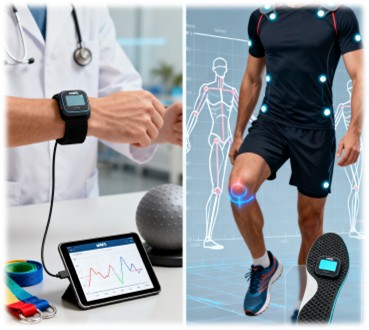
The applications of wearable motion monitoring systems are vast and varied, with significant impacts on both medical and sports fields. In the medical domain, wearable sensors assist in rehabilitation training, disease prevention, and movement disorder assessment. For example, Liang et al. developed a motion capture device using a wearable MEMS sensor and a mobile terminal, enabling remote monitoring of patient rehabilitation. This technology allows doctors to assess the movement status of patients with conditions such as Parkinson's disease, amyotrophic lateral sclerosis, and cerebral palsy, and to develop targeted rehabilitation plans.
In sports, wearable sensors help athletes optimize their training by providing detailed motion analysis. They can also be used in sports physiology research to understand the impact of physical activities on the body. For instance, wearable sensors can monitor the biomechanics of athletes during training, providing insights into their performance and helping to prevent injuries. The integration of these sensors into sports equipment and clothing offers real-time feedback, allowing athletes to adjust their movements and improve their techniques.
Design Considerations for Wearable Systems
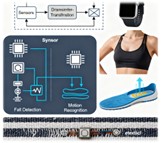
Designing wearable systems for motion monitoring involves careful consideration of sensor selection, placement, and system architecture. The choice of sensors depends on the specific application and monitoring requirements. For instance, fall detection might require accelerometers placed near the waist and thighs, while complex motion recognition might need multiple inertial sensors.
The placement of sensors directly impacts wearing comfort and monitoring accuracy. Early wearable systems used backpacks and pockets, but modern designs incorporate smart watches, undershirts, and shoe insoles. Flexible sensors, in particular, offer enhanced comfort and can be integrated into various forms such as patches, insoles, gloves, and clothing. For example, Wicaksono et al. designed a customized e-textile comfort suit with sensor elements attached to the striped textile channels of the garment. This design ensures close contact between the sensors and the body, enhancing the accuracy of motion monitoring.
Challenges and Future Prospects
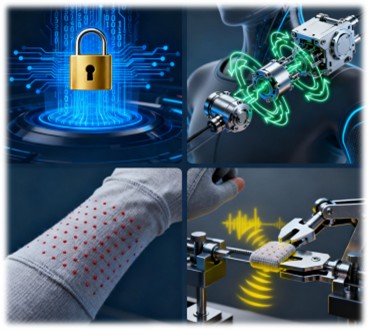
Despite significant advancements, wearable motion monitoring systems face several challenges, including data security, durability, comfort, and accuracy. Ensuring the safety and confidentiality of personal data collected by wearable devices is paramount. High power consumption and the need for frequent recharging limit the durability of wearable devices. Innovations in self-powered devices that convert mechanical energy into electrical energy offer potential solutions.
Maintaining wearing comfort as sensor networks become more complex is a significant challenge. Flexible sensors integrated into textiles promise enhanced comfort but come with higher costs and accuracy concerns. Improving the elasticity and resistance of flexible sensors to mechanical stress is crucial for enhancing their accuracy and reliability. Future developments will focus on creating more sophisticated and durable sensors that offer seamless integration with wearable devices.
Conclusion
Wearable technology for human motion monitoring has come a long way, with sensors becoming smaller, more accurate, and increasingly integrated into everyday wear. The integration of flexible and textile-based sensors has opened new avenues for more comfortable and accurate monitoring solutions. Future developments will focus on improving accuracy, enhancing comfort, and ensuring data security. The potential applications of wearable motion monitoring are vast, from aiding medical rehabilitation to enhancing athletic performance. As technology continues to advance, wearable systems will become more sophisticated, offering real-time, accurate, and comfortable monitoring solutions.
If you have related needs, please feel free to contact us for more information or product support.
Reference
- Huang, Xinxin, et al. "Sensor-based wearable systems for monitoring human motion and posture: a review." Sensors 23.22 (2023): 9047.
These products and services are for research use only and cannot be used for any clinical purposes!



 Fig.1 Number of papers related to human motion wearables published from 2012 to 2022. (Huang X., et al., 2023)
Fig.1 Number of papers related to human motion wearables published from 2012 to 2022. (Huang X., et al., 2023)


